
 |
|
| The Be-200 is a much smaller aircraft than the A-40 Albatros and is
designed to fulfil a number of roles - Firefighting, Search and Rescue,
Passenger Transport, Ambulance, etc. The cabin is pressurised and the aircraft
has been designed to FAR-25 requirements which will allow it to be certificated
to FAA & JAA standards. It is powered by two 7,500kgf thrust D-436T
turbofans.
For further information contact the Beriev website. |
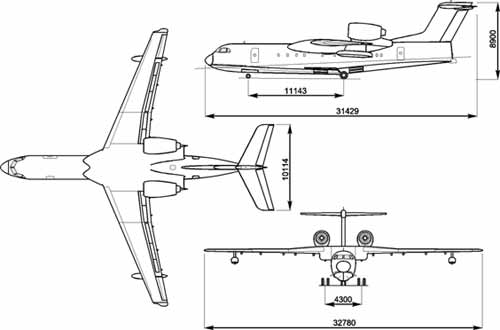 |
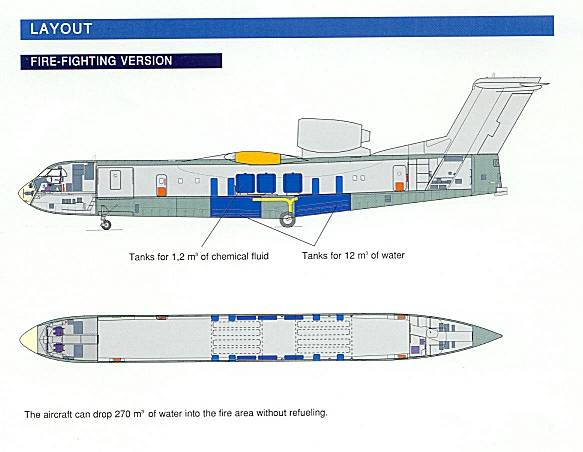
Scan from a Beriev brochure showing the layout of the 'standard' firebomber.
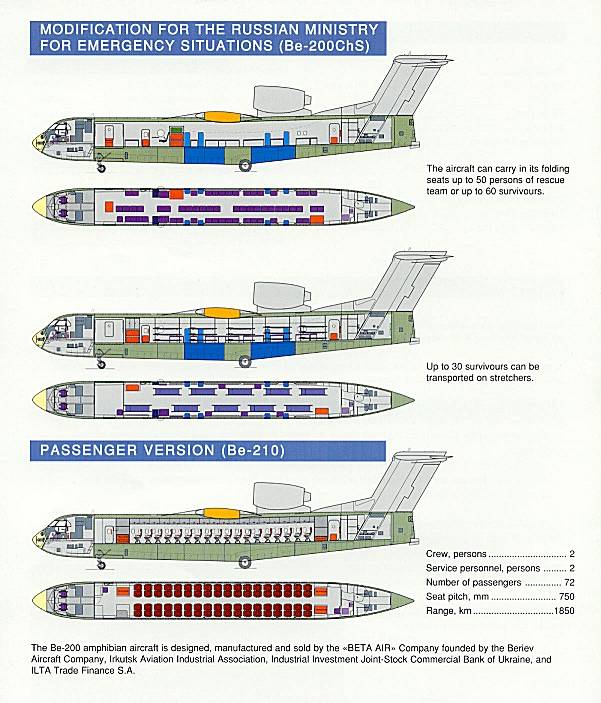
Another brochure image showing other possible layouts.
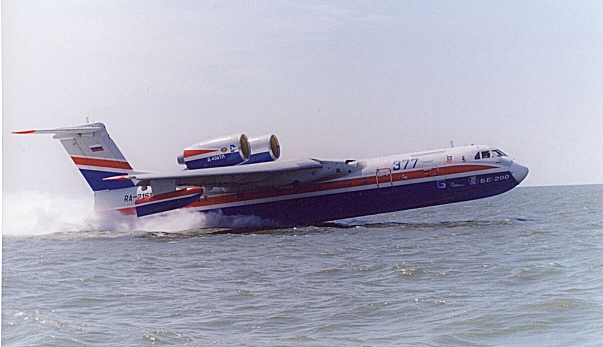
Wearing its Paris buzz number 377, the Be-200 accelerates onto the
step during takeoff.
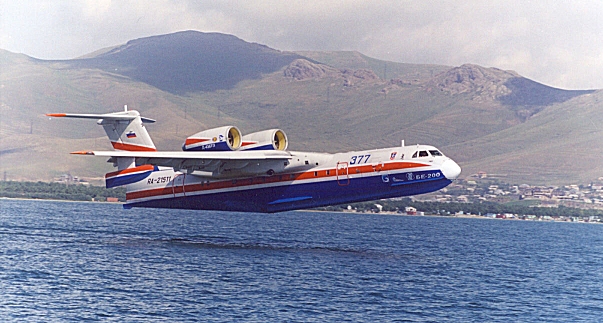
A nice view of the aircraft just prior to alighting.
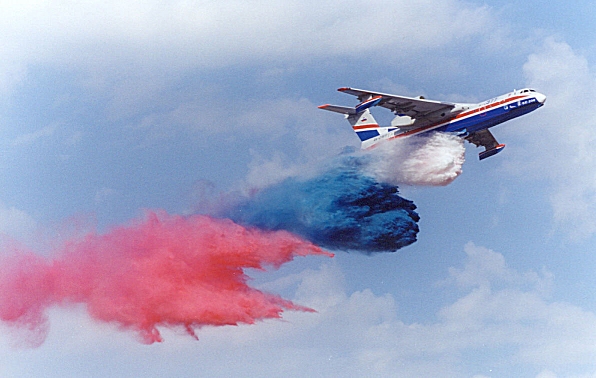
For fighting patriotic fires, the Be-200 uses coloured water/retardant......
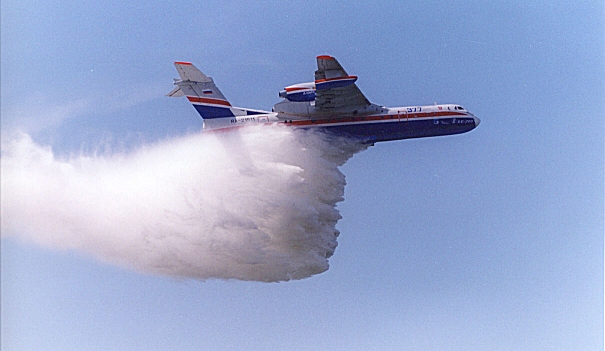
......whilst white is used for 'ordinary' fires!
The above 4 photographs are not mine, they were purchased at Gelendzhik - so thanks to the anonymous photographer.
The following photographs were taken by me and may not be used without my express permission.

Beriev Be-200 - now minus its Paris buzz number banking round after
its water
drop at the Gelendzhik Hydroaviation show.
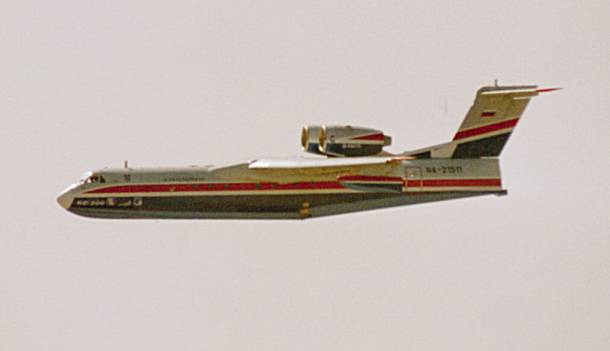
Side profile view showing how the engines are mounted above the wing
on
short pylons, clear of any spray.
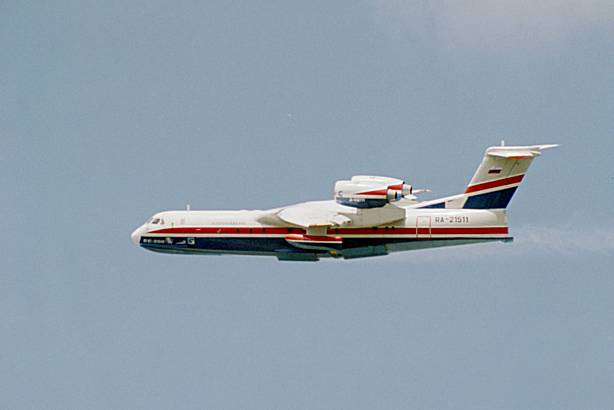
Another side view showing the open water-drop doors. This is the prototype
Be-200.
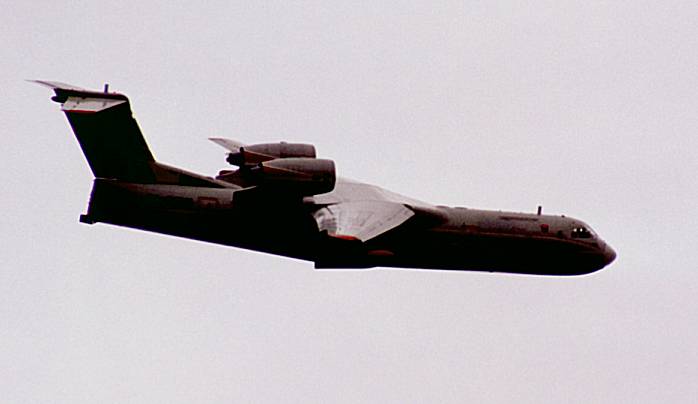
Another shot of the Be-200 showing the engine mounts.
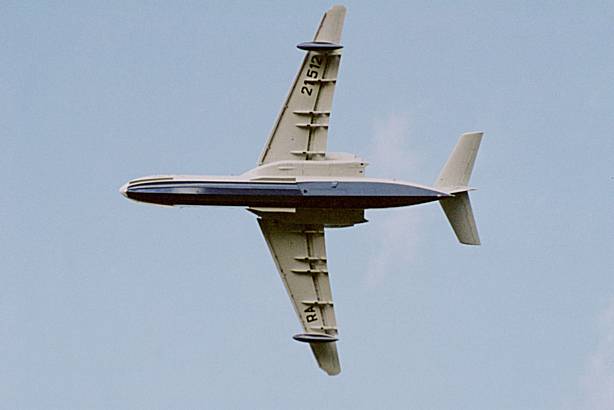
Underside view of the first production Be-200ChS illustrating the large
wing root extensions that mount the engine pylons on top and the main
undercarriage below.
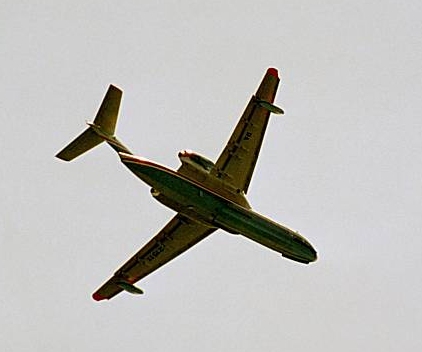
Underside view of the prototype.
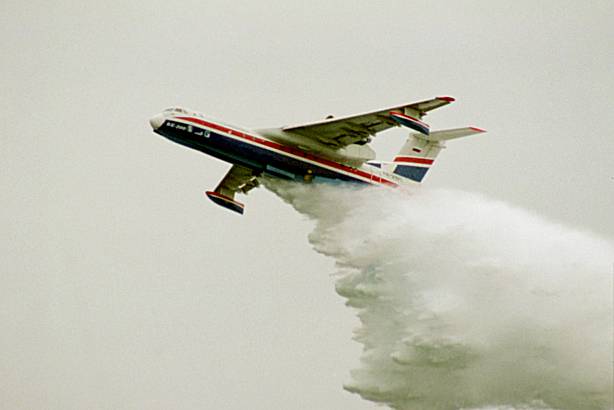
One of its design roles - water bombing.
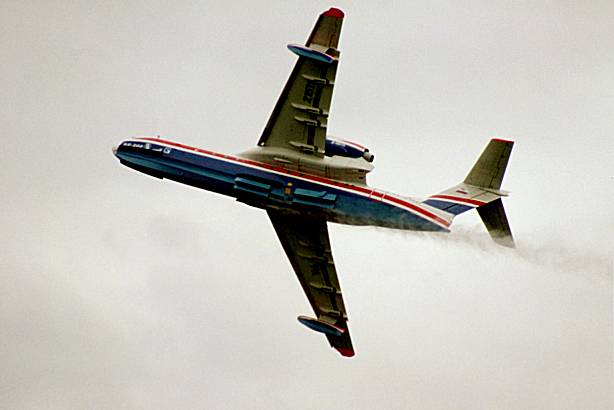
Banking away after the drop - showing the open doors.
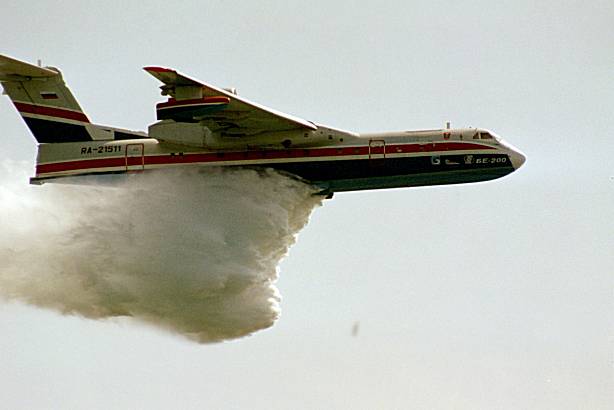
Another run , another drop.......
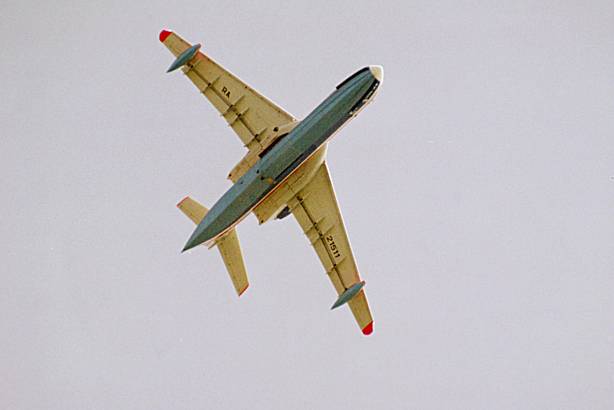
Underside view of the prototype - RA-21511.
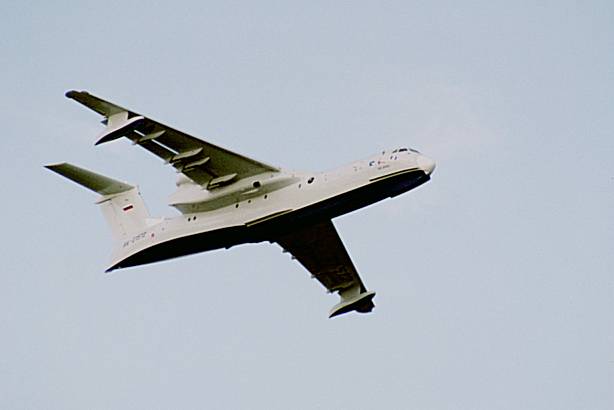
The first Be-200ChS for the Russian Ministry of Emergency Situations
-
MChS in Russian - hence the designation. MChS is also sometimes called
Emercom.
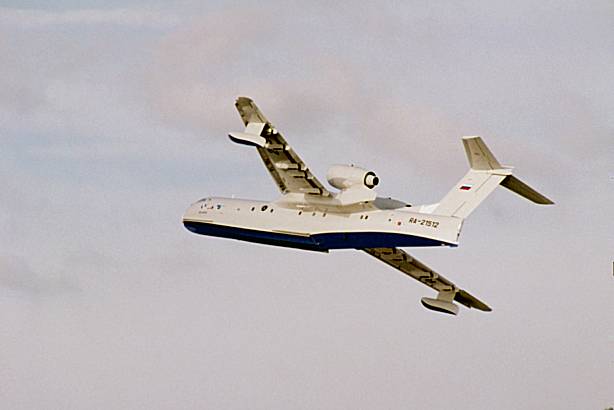
RA-21512, the first production example, only made its first flight
a week before
the Gelendzhik show.
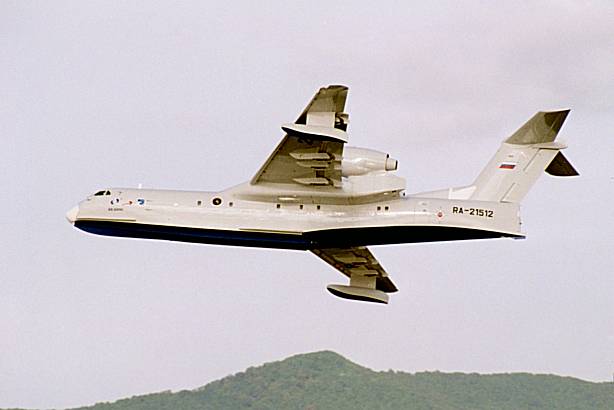
Note the large observation window by the wing root.
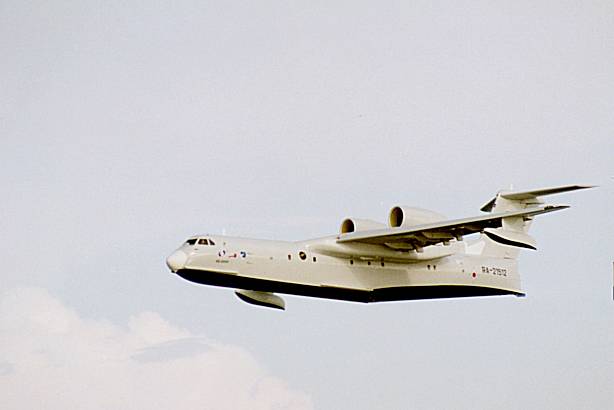
The Be-200 is a graceful looking machine.
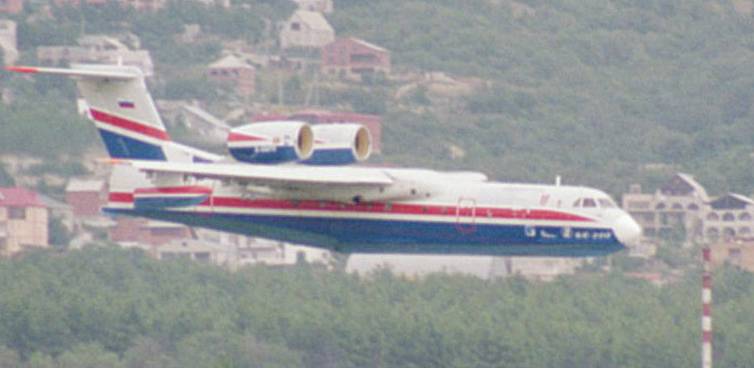
This is the prototype - at the limit of my lens - approaching for a
water landing.
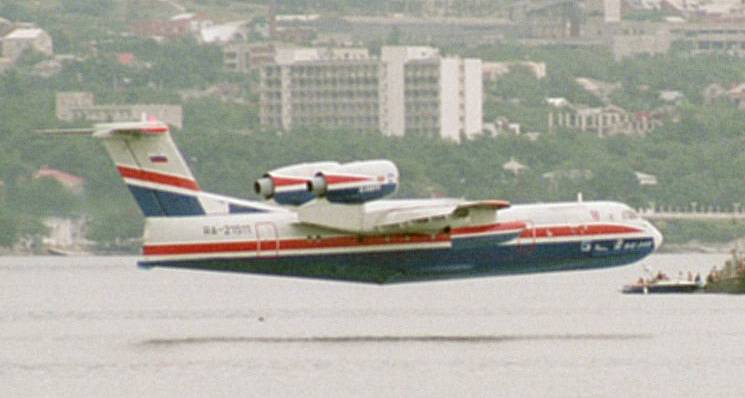
And just about to touch down.
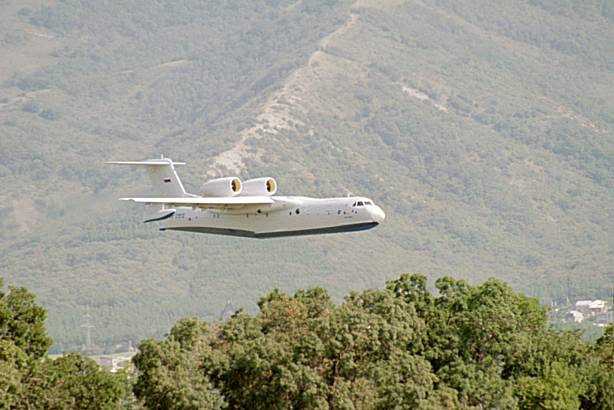
RA-21512 coming in over the trees for its water landing.
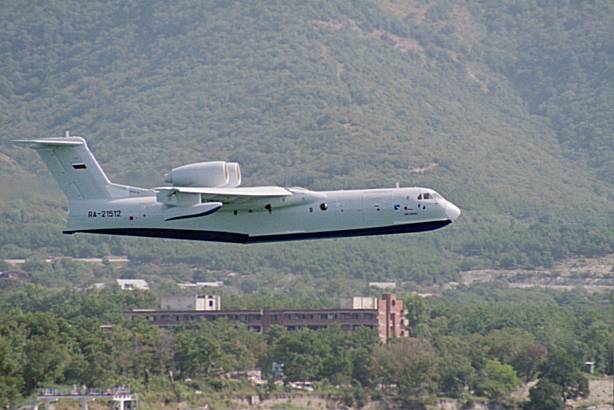
On finals......
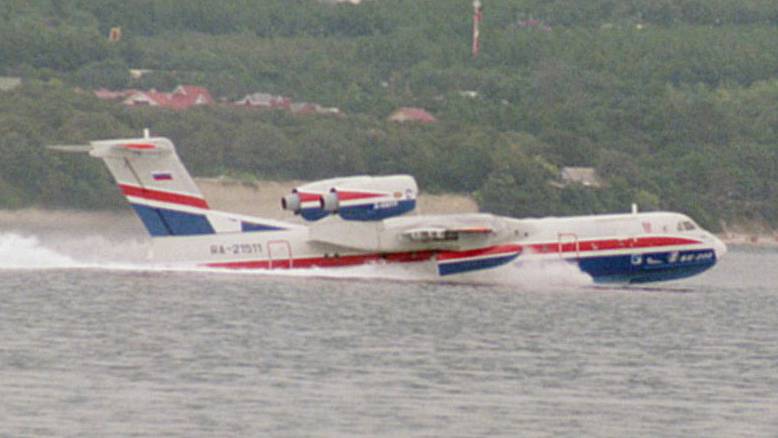
Long distance shot of the prototype just starting its takeoff run.
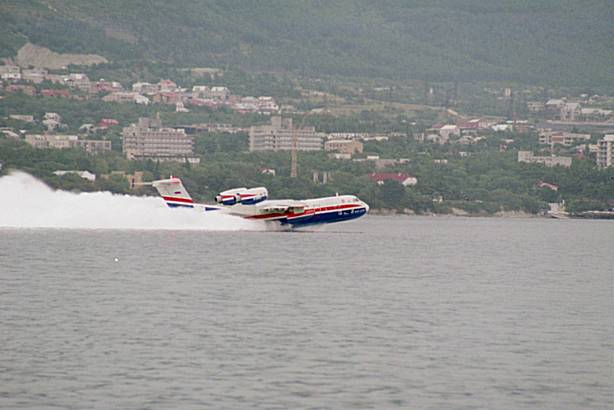
RA-21511 now at full power - note the nose-high attitude.
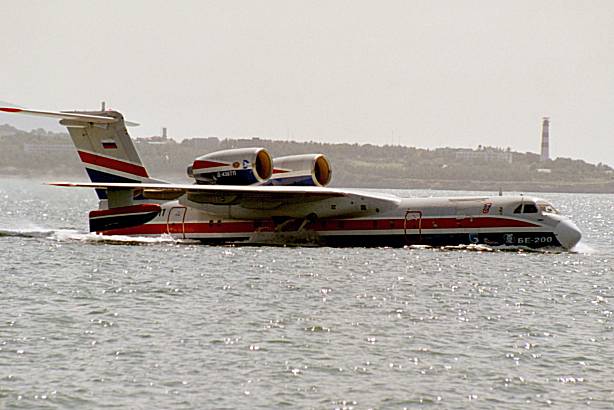
Taxying back in after its display.
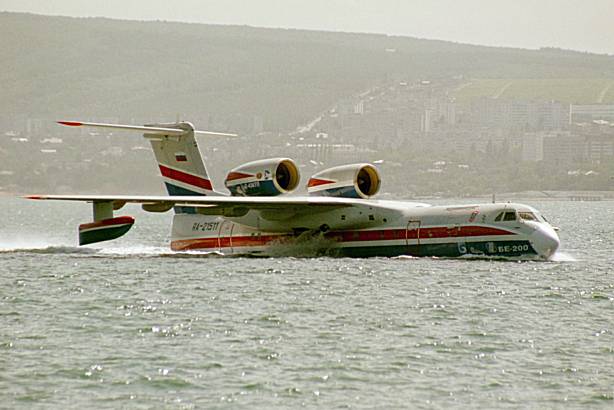
Note the drag from the mainwheels.
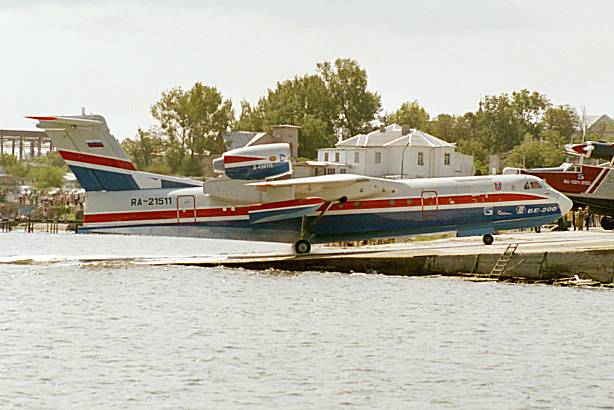
A burst of power from the twin D-436T turbofans and RA-21511 climbs
up
the slipway. Throughout its display, the engines were extremely quiet.
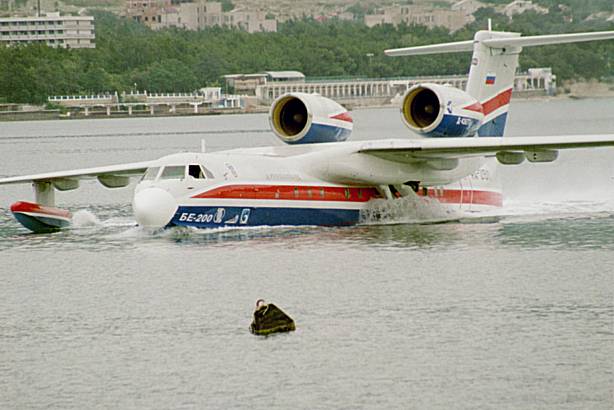
Approaching the slipway after another display.
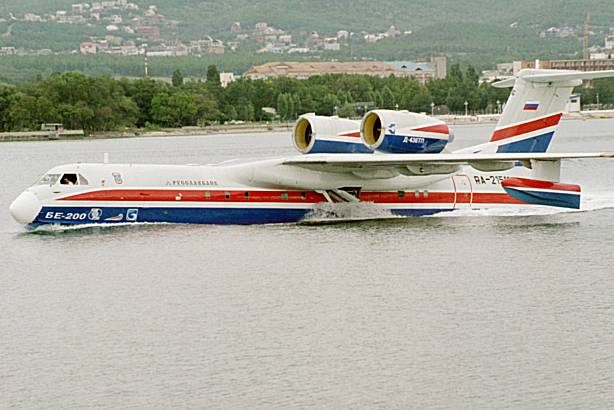
The nosewheel is just about to make contact with the slipway.
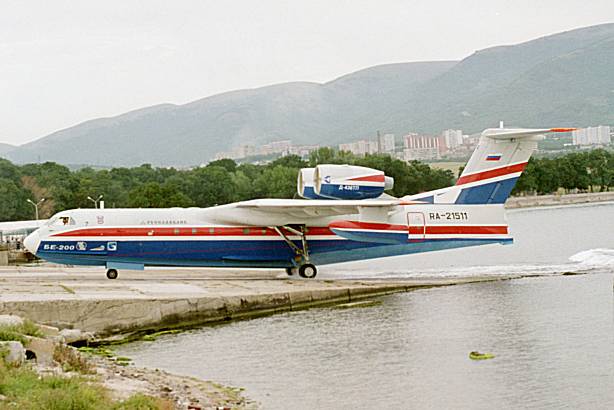
And out she comes.
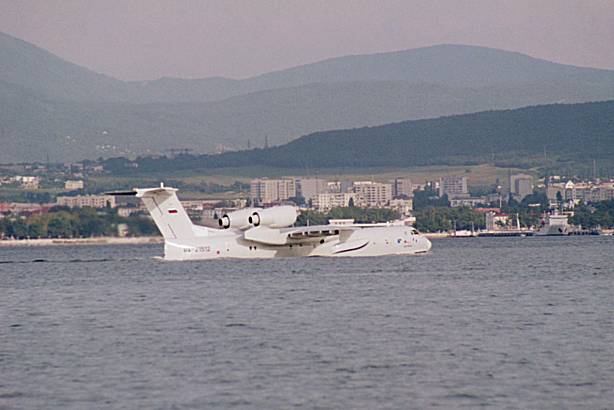
RA-21512 taxying out for its display.
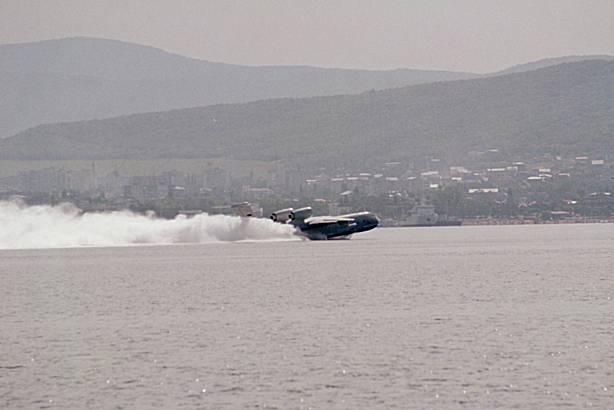
And at full throttle just about to unstick. Even at full power it makes
little noise.
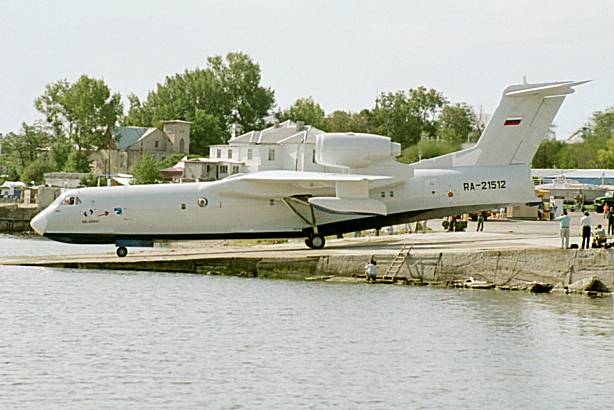
The Be-200ChS entering the water down the slipway.
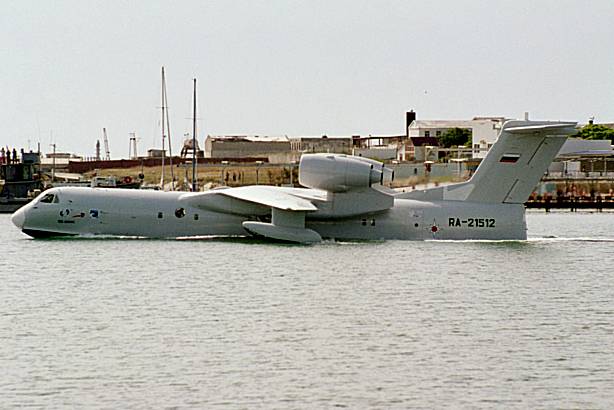
And on its way for yet another display. Although RA-21512 is fitted
for
water bombing, only the prototype actually made any drops.
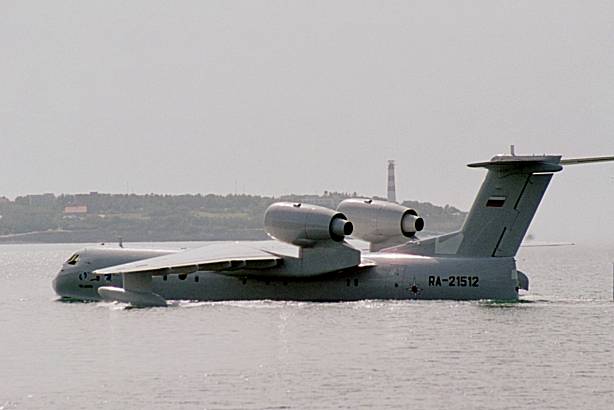
Is it a boat?.... is it a plane?......
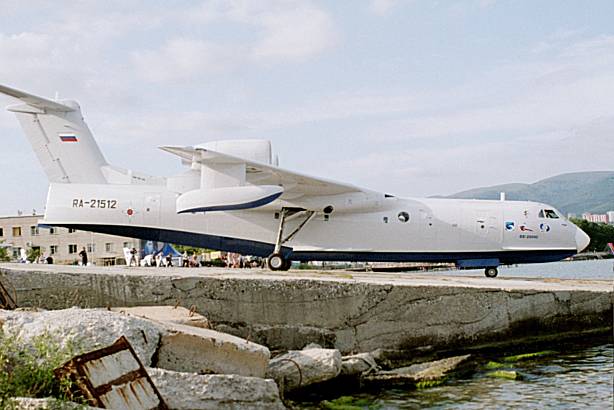
Down the skipway again - note the open intake in the wing root for
the APU
and its exhaust just in front of the mainwheel leg.
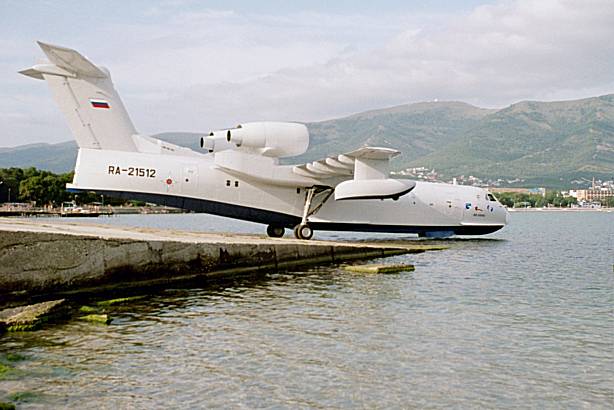
Dipping its toe in the water to test the temperature.....
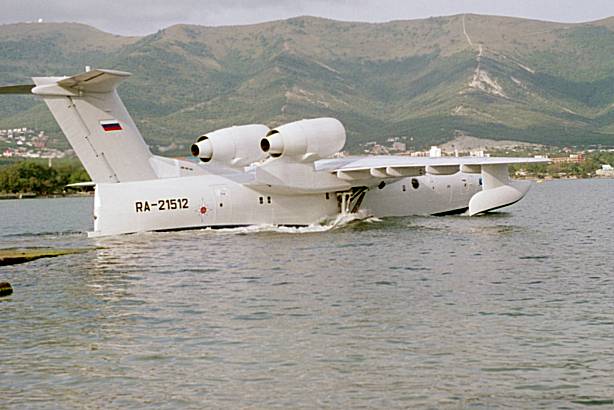
And away it goes.....
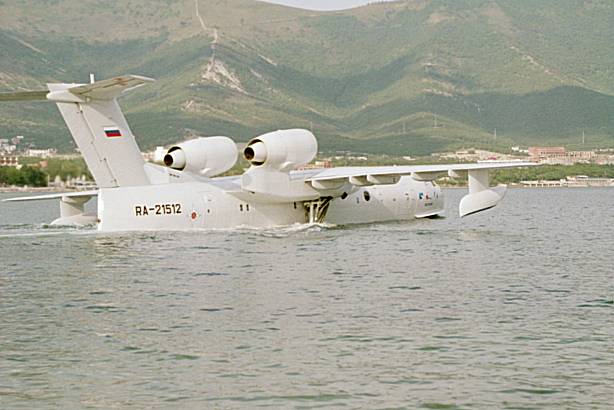
The mainwheels are just starting to retract as the Be-200ChS becomes
fully waterborne.
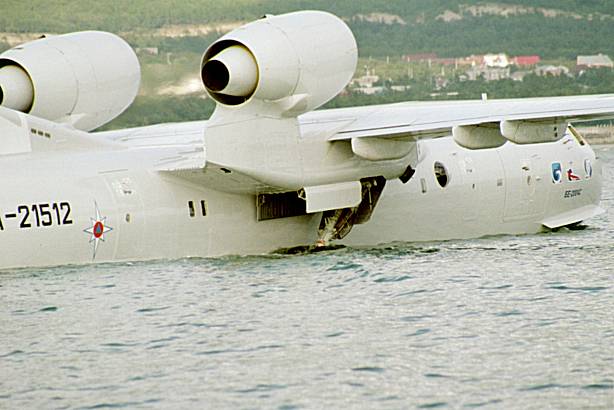
The main doors open and the undercarriage starts to retract....
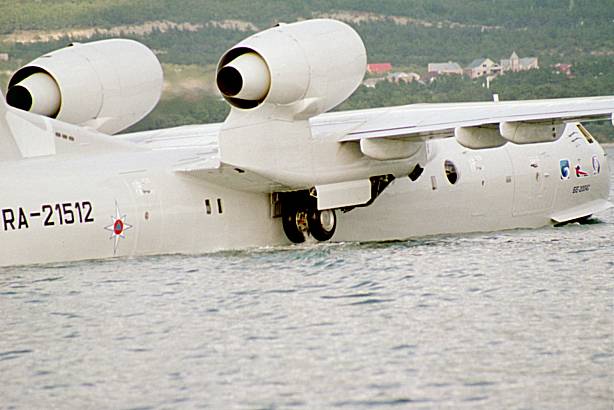
Almost retracted..
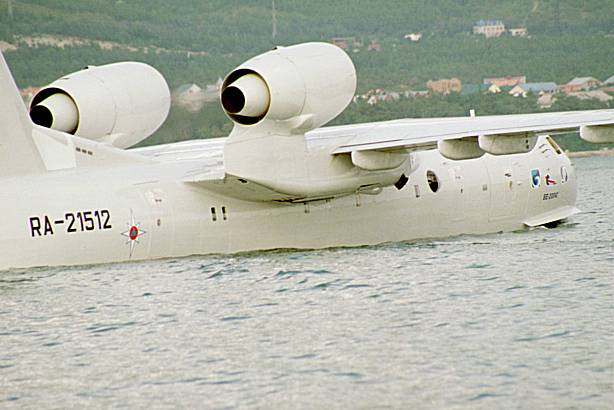
and the main doors close.
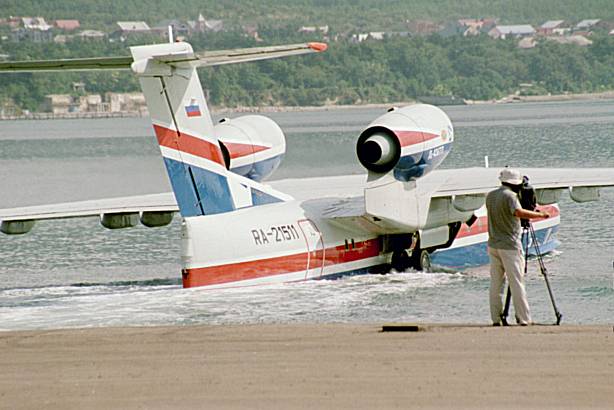
Similar scene on the prototype.
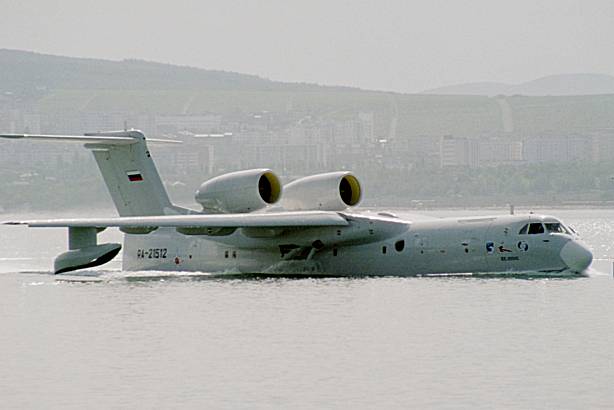
Be-200ChS 'taxying' back in with the wheels down.
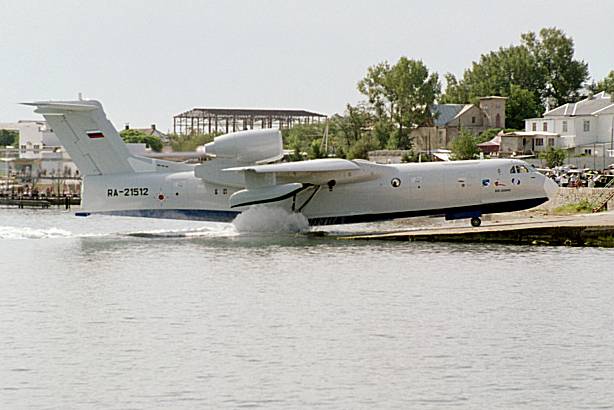
And up the slipway.
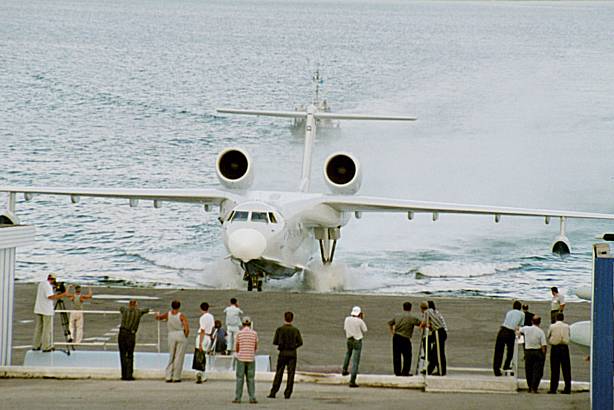
Head-on view as RA-21512 powers up the slipway.....
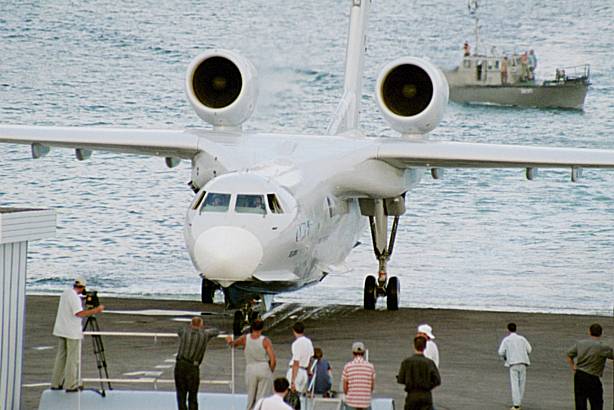
and on to the ramp.
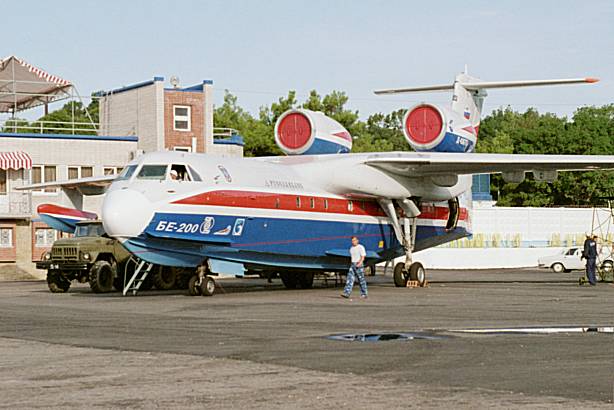
RA-21511 parked on the ramp at Gelendzhik.
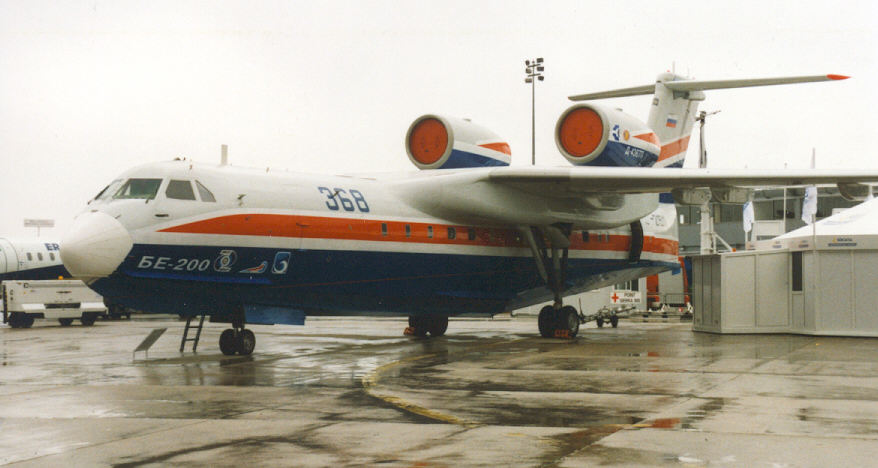
The same machine photographed at Le-Bourget - this time with buzz number
368.
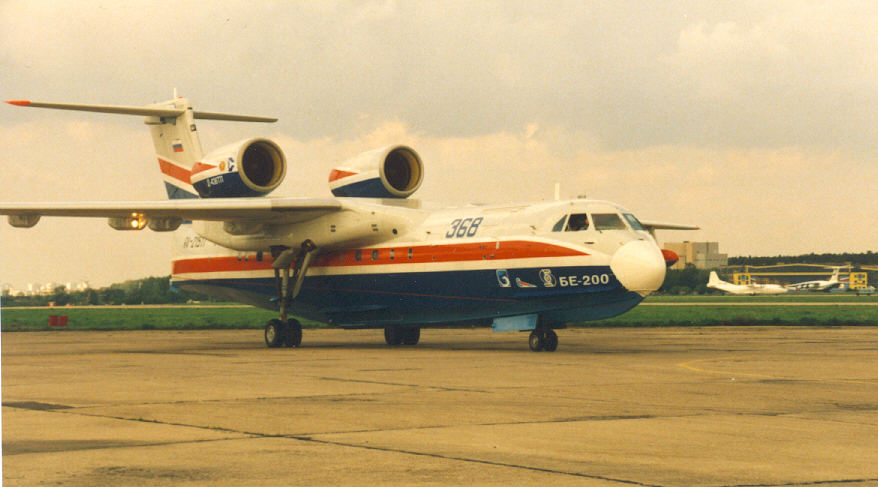
And here it is again taxying out at Zhukovsky, Moscow. Note the taxy
light under the wing.
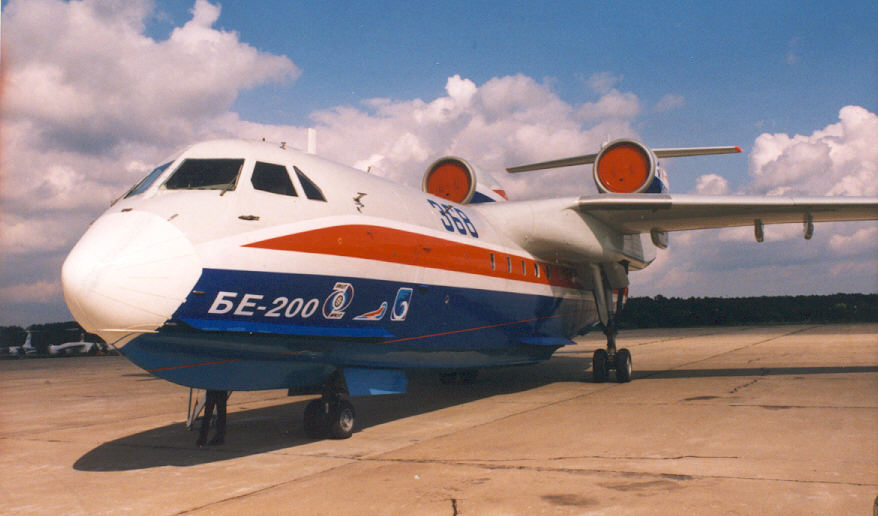
On the ground at Zhukovsky.
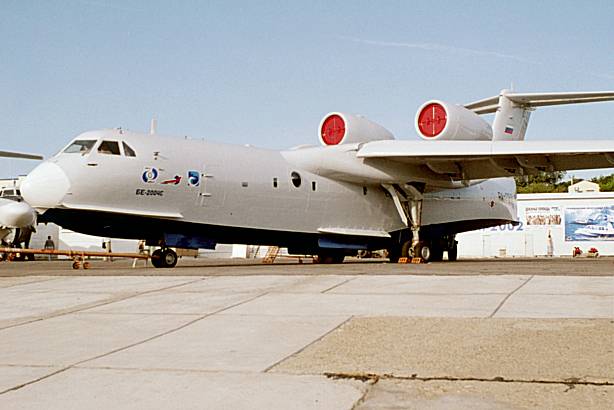
The Be-200ChS on the ramp at Gelendzhik.

Another shot of RA-21512 with the water-drop doors open.
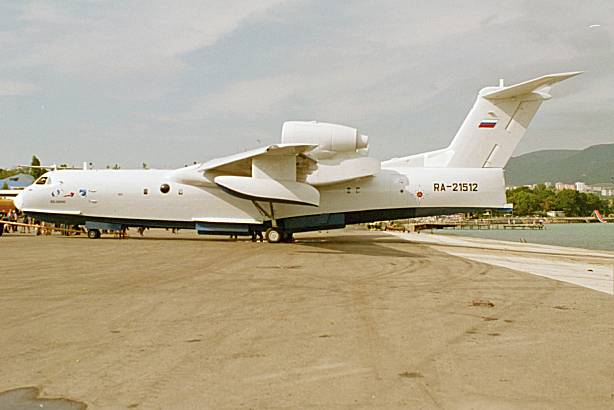
Side-on view of the Be-200ChS.
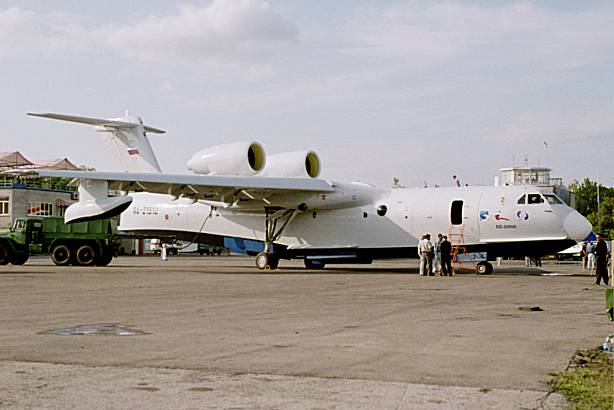
On the ramp with a power truck providing electricity.
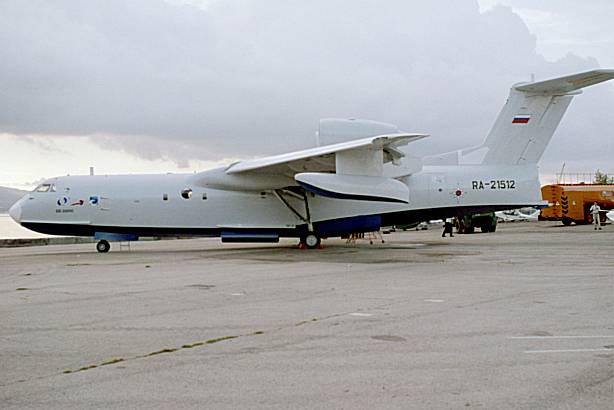
Another view from the port side.
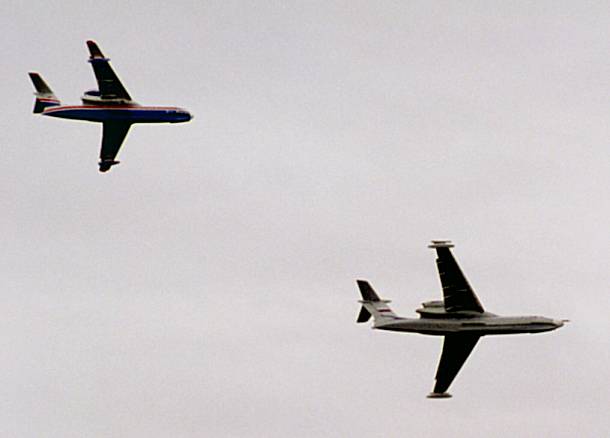
Size comparison between the Be-200 on the left and the A-40 Albatros.
Walkround
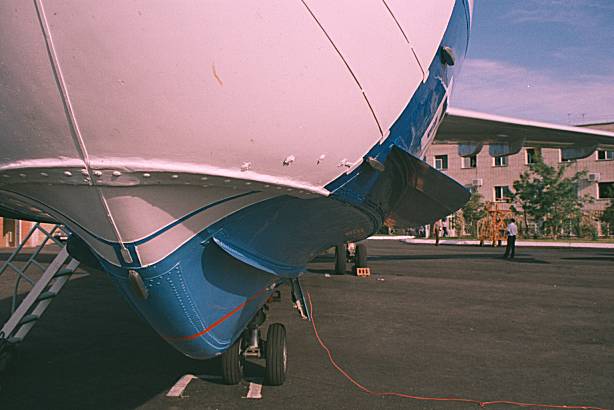
Looking down the nose of the prototype.
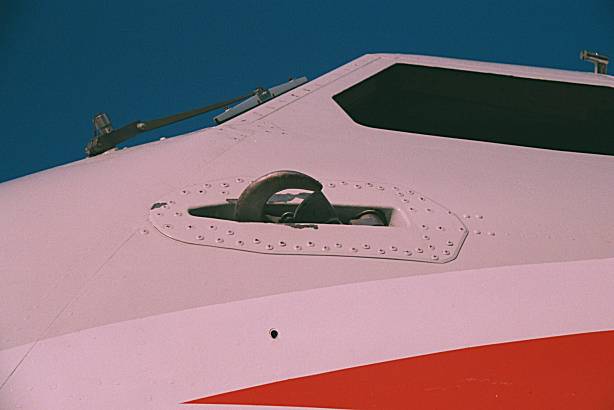
Mooring latch just below the port windscreen.
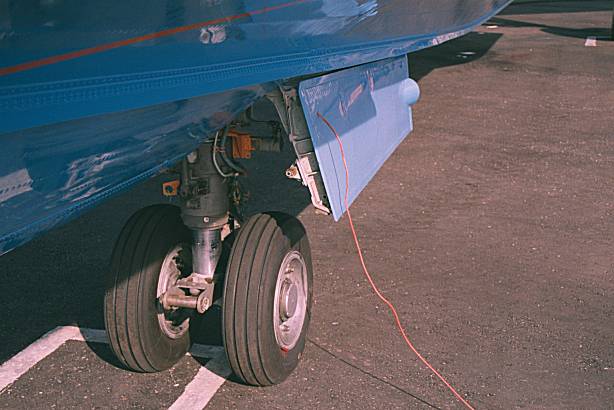
Nosewheel and door with earthing wire.
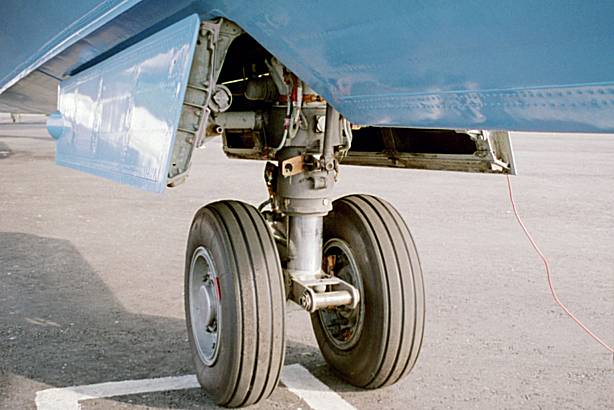
Nosewheel from the starboard side.
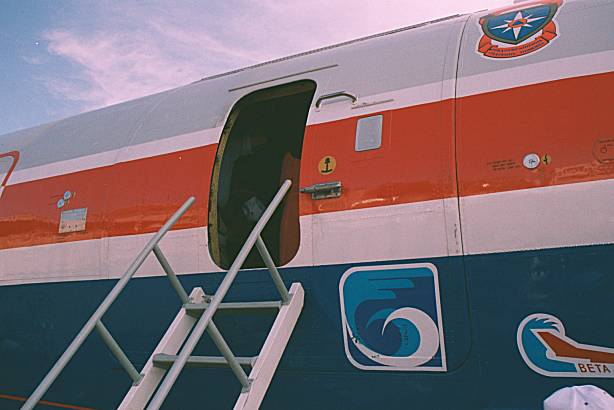
Small inward-opening crew door let into a larger freight door.
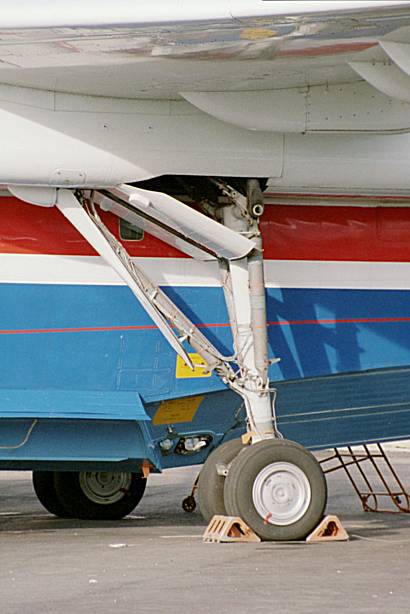
Starboard main undercarriage leg and wheel.
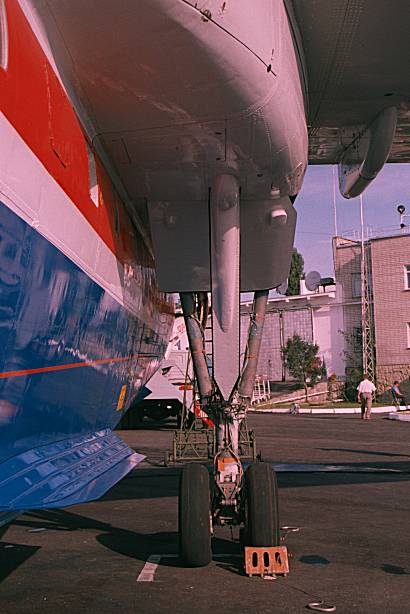
Starboard main leg from the front.
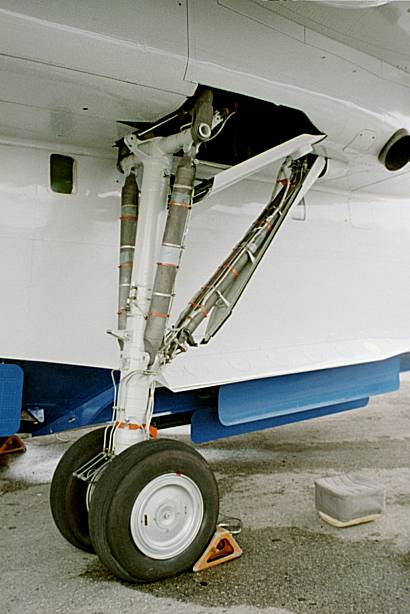
This is the port main leg on RA-21512.
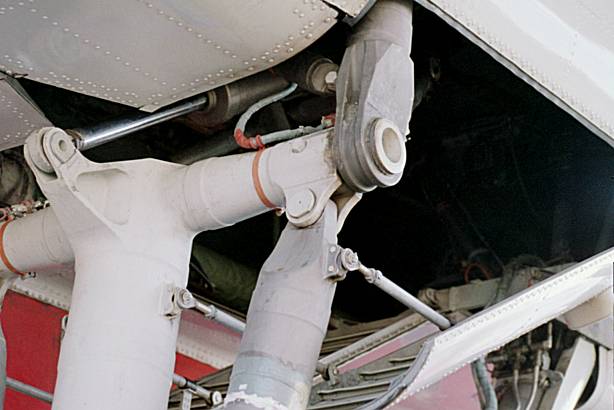
Close-up of the top of the maingear leg.
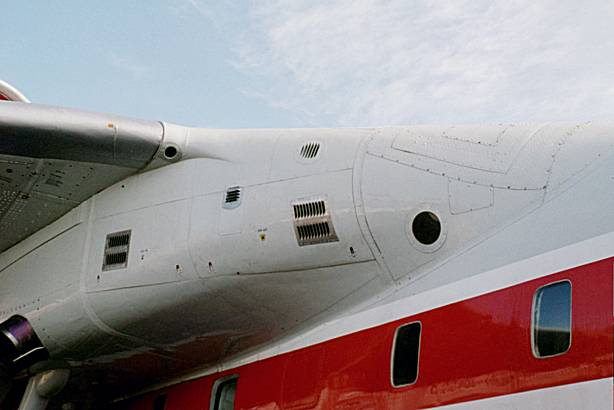
Starboard wing root extension with the many cooling louvres for the
APU.
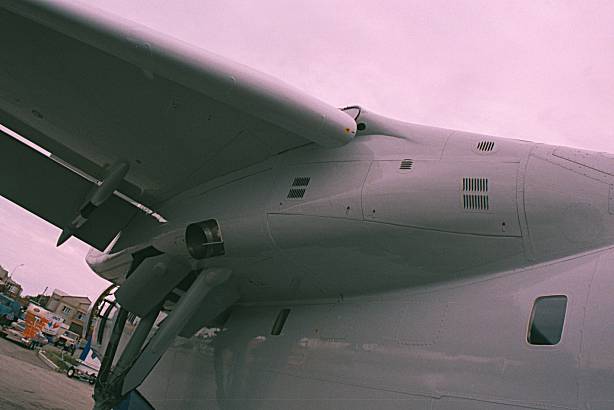
The same area of the Be-200ChS.
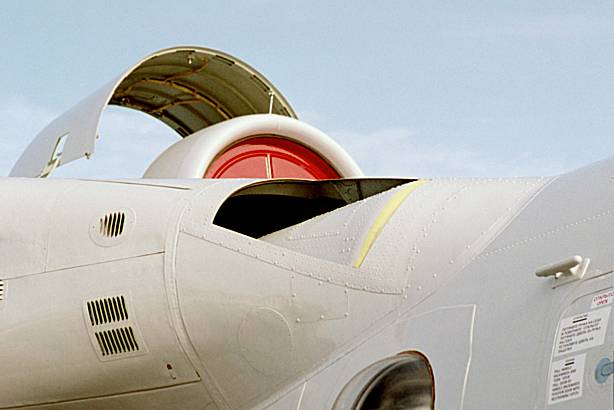
Open intake shutter on the APU. Note the large bulged observation window
added to the Be-200ChS.
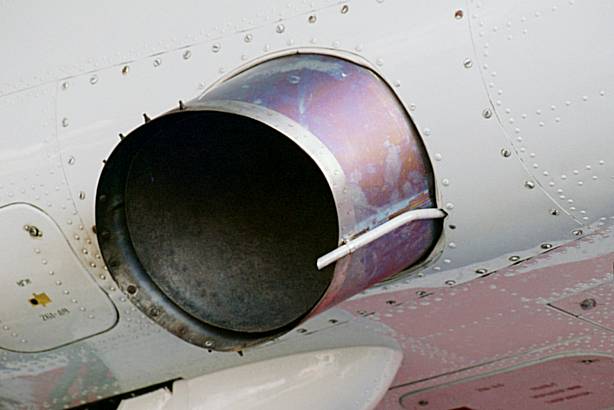
Exhaust outlet from the APU.
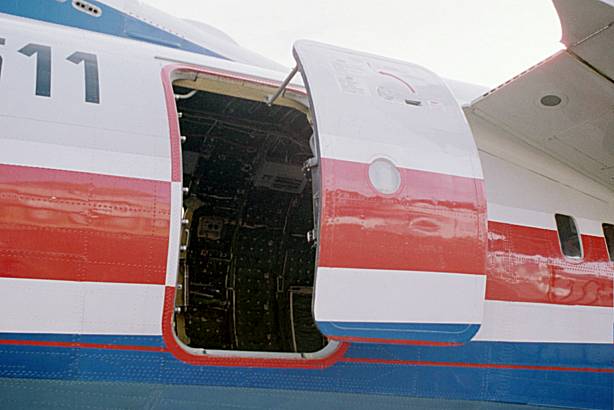
Outward-opening door on the rear starboard side of RA-21511.
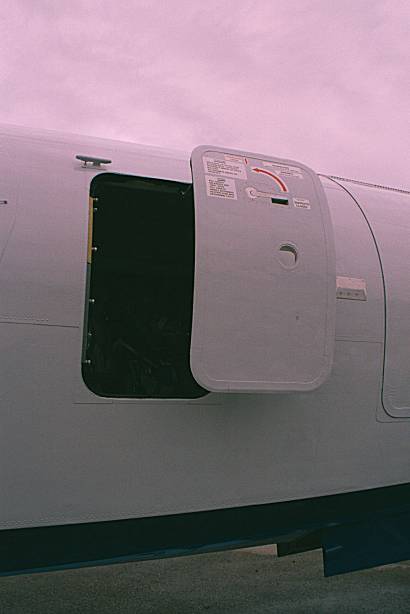
Main access door just behind the larger freight door
on the starboard side.
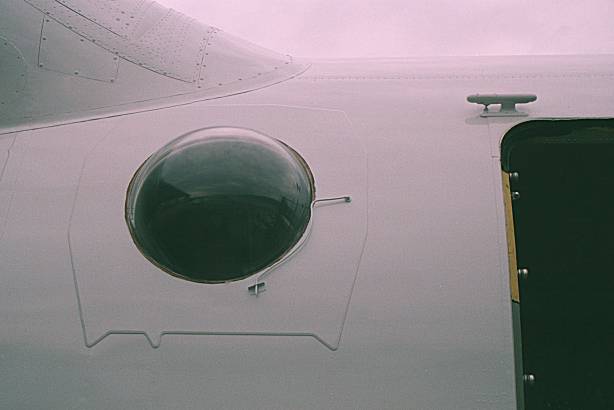
The observation window and its strengthening plate are new to the Be-200ChS.
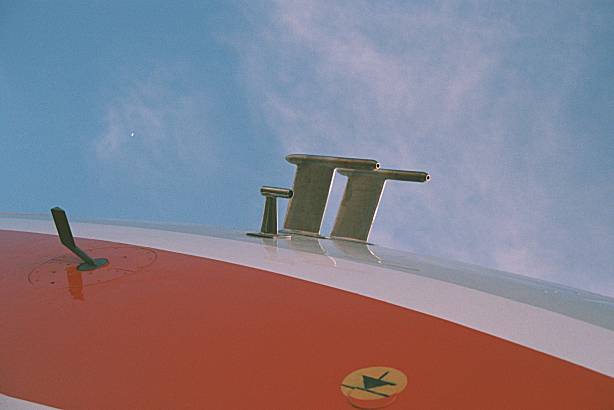
Cluster of air data probes and AoA indicator.
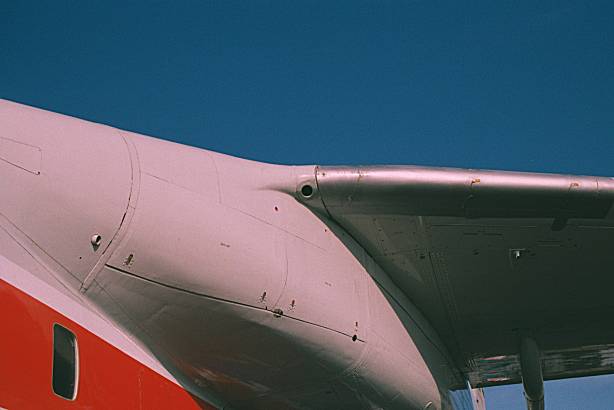
Port wing root.
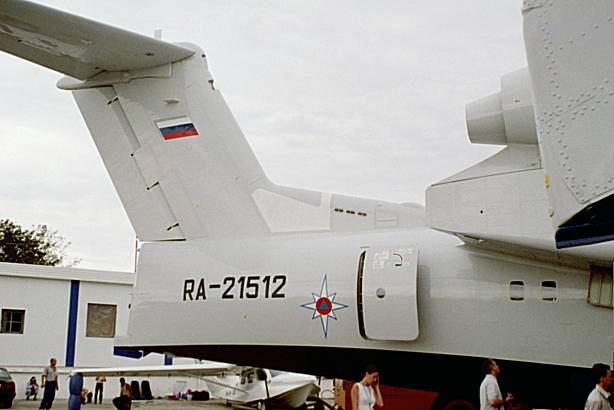
Rear end and fin on the Be-200ChS. Note the row of three chaff/flare
dispensers in the dorsal fin extension.
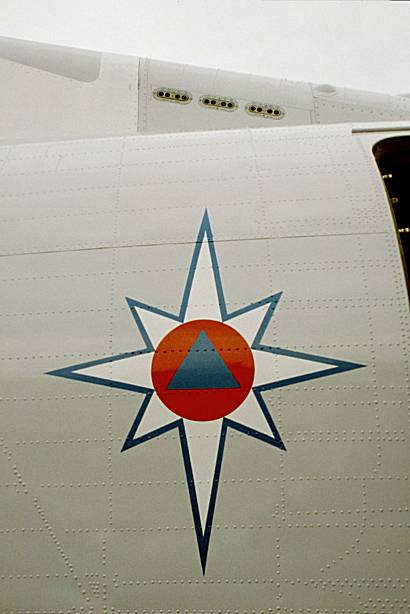
Badge of Emercom - MChS.
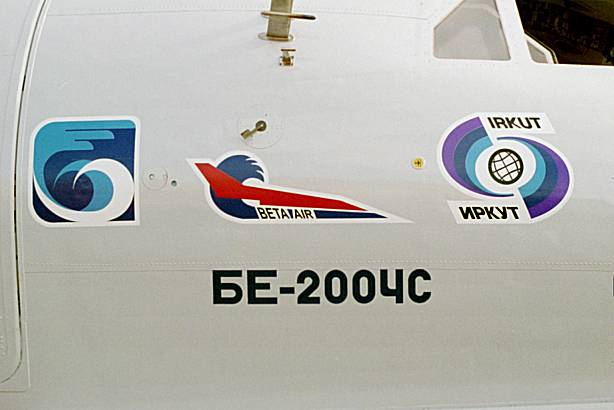
From left to right - the logo of TANTK Beriev the designers,
'Beta Air' the sales organisation and 'Irkut' the manufacturers.
The aircraft's designation - Be-200ChS - is in Cyrillic below.
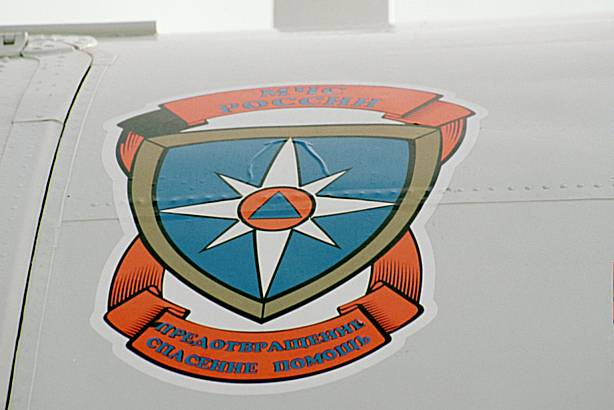
A more heraldic version of the MChS on the side of RA-21511.
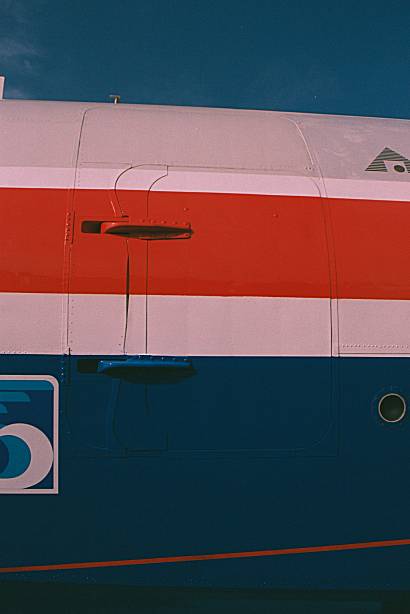
Crew access door on the port side.
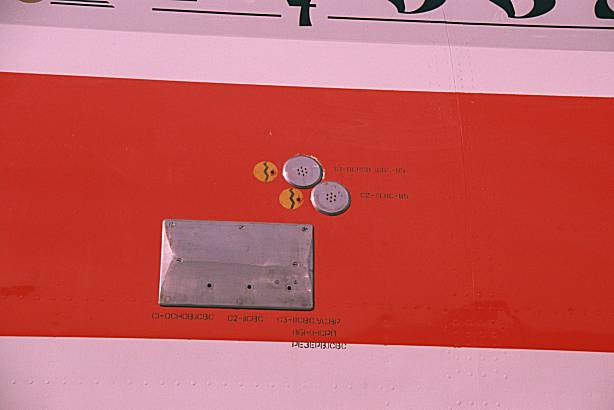
Not sure - static/electrical outlets ?
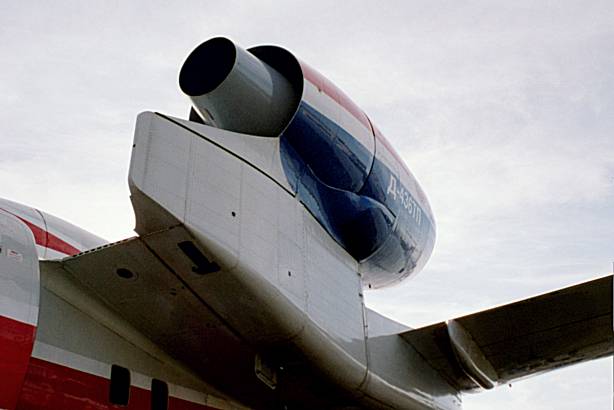
Looking up at the starboard engine and pylon.
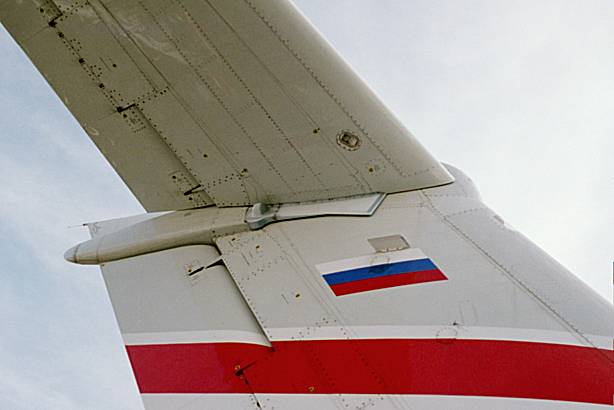
Top of the fin and all-moving tailplane.
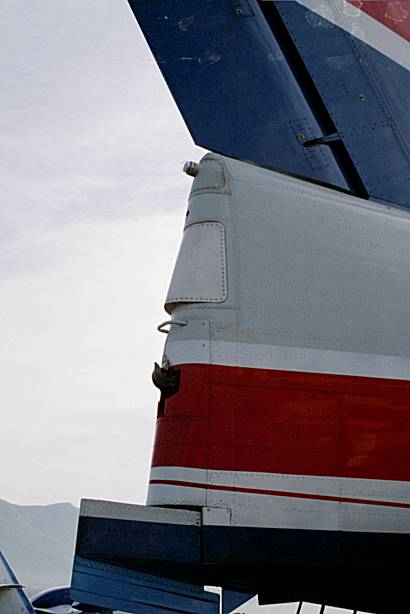
Extreme rear end showing the water rudder and
mooring latch.
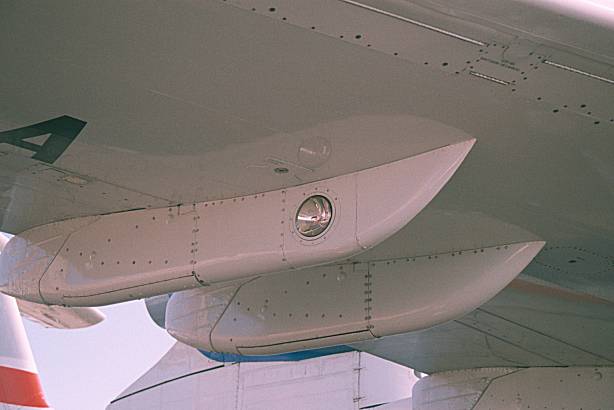
Flap track covers with a retractable taxy light.
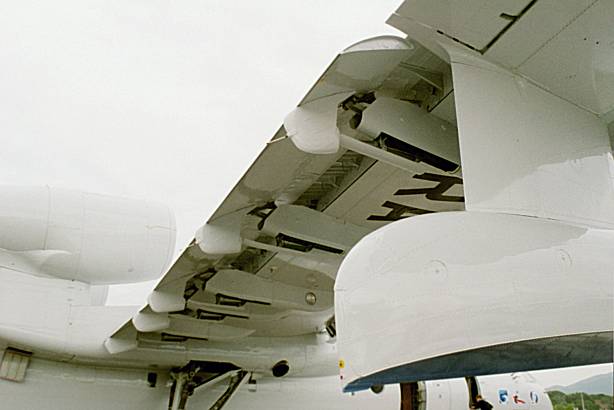
The flaps are partially deployed in this view.
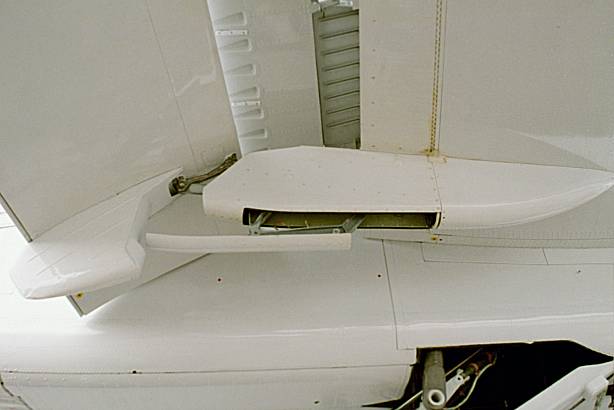
A closer view of the flap and its operating mechanism.
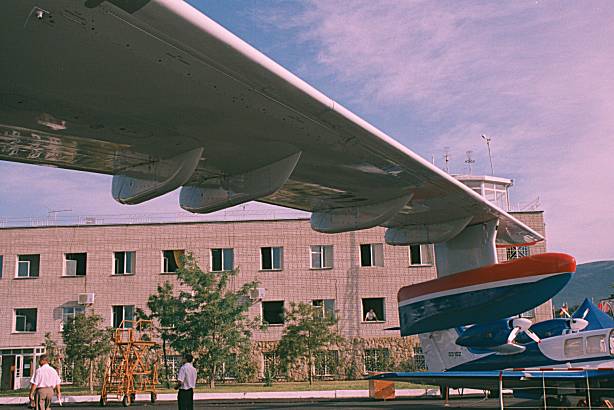
Looking along the port wing of the prototype.
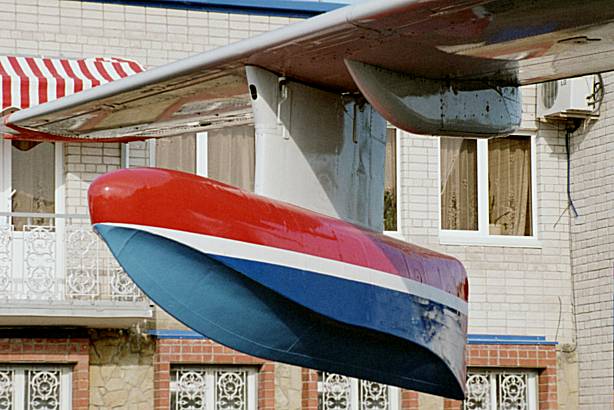
Close-up of the starboard float.
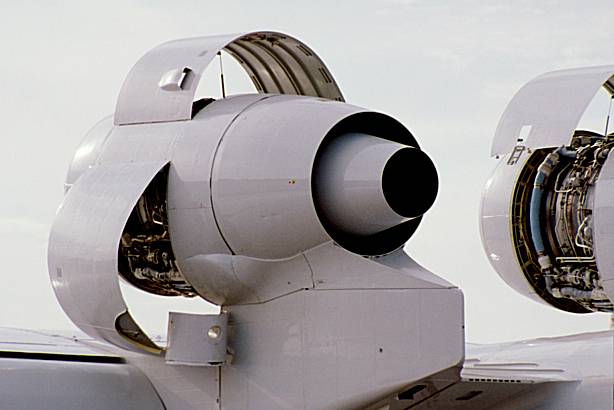
The D-436TP three-shaft turbofan is manufactured by the Ukrainian
company
Motor Sich.
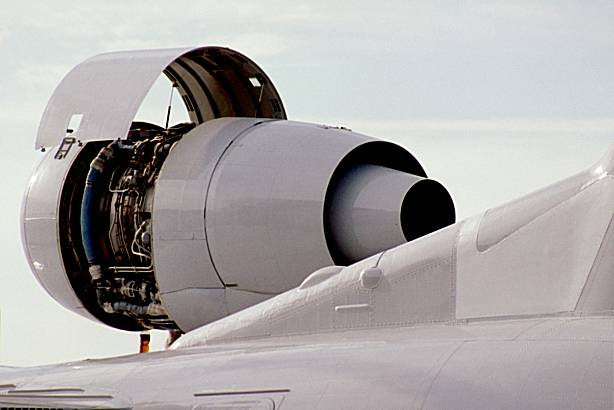
A view of the starboard engine with its access panels open.
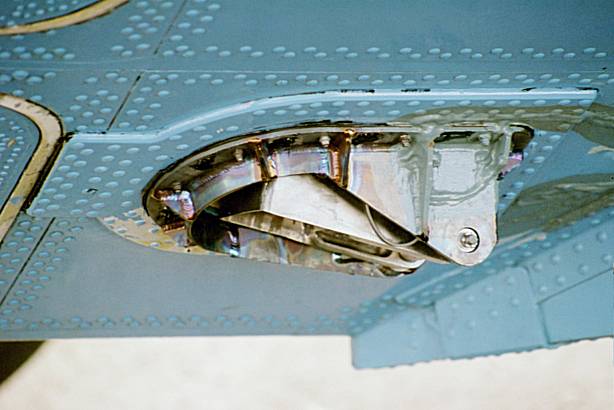
Closeup of the water scoop in its retracted position, just behind the
step.
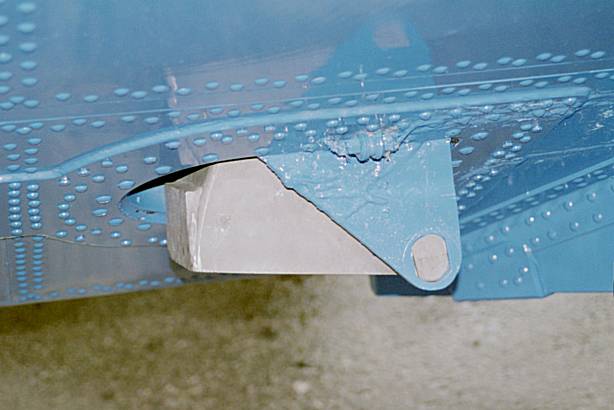
A slightly different style of scoop. Judging by the colour, this
is the Be-200ChS.
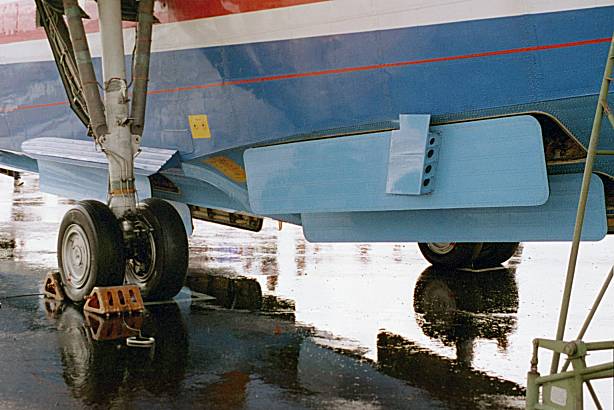
The water drop doors on the prototype Be-200.
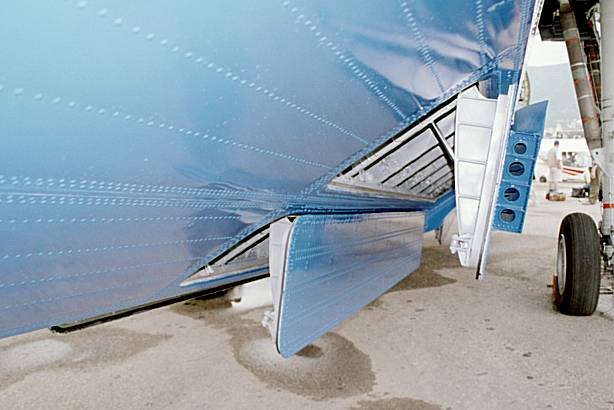
Rear starboard pair of doors on the B-200ChS.
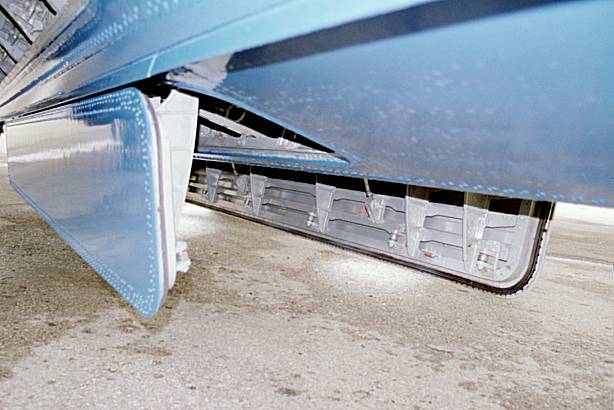
The inner pair of doors.
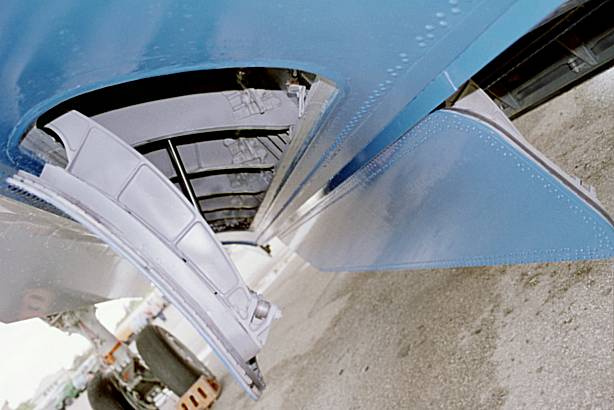
Looking rearwards, starboard side.
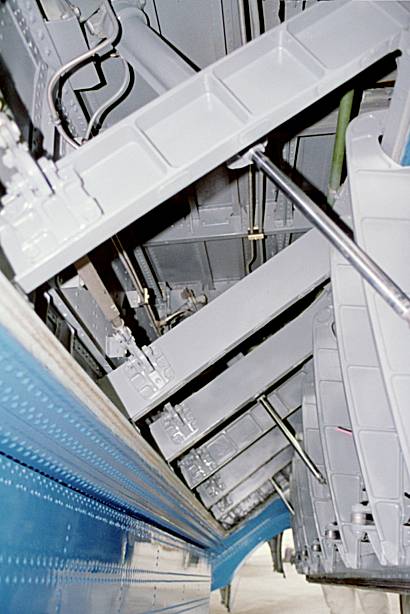
Looking up into the water compartments.
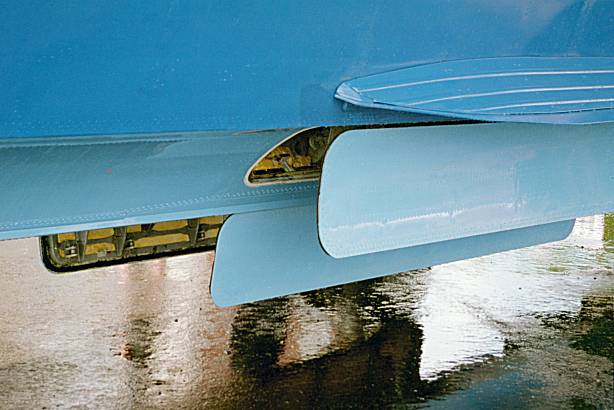
Another view of the doors.
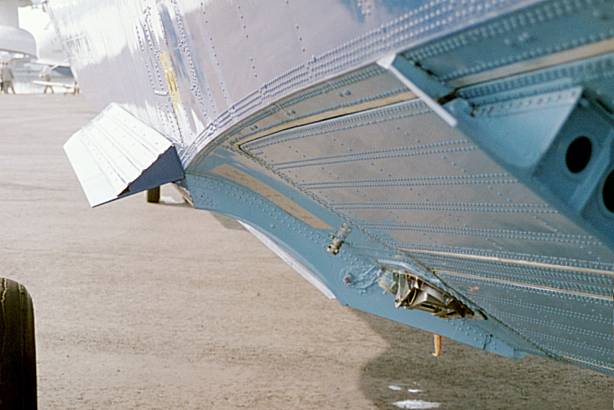
A look at the Vee planing bottom showing from left to right, the large
spray
suppressing chine, the step, the port side scoop and the wedge-shaped,
patented, hydrodynamic device with holes at its rear.
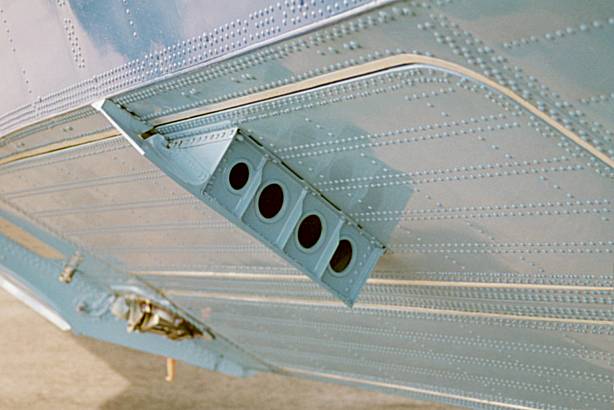
A close-up of the hydrodynamic device fitted on the port rear door.
It has something to do with aiding unstick during takeoff.
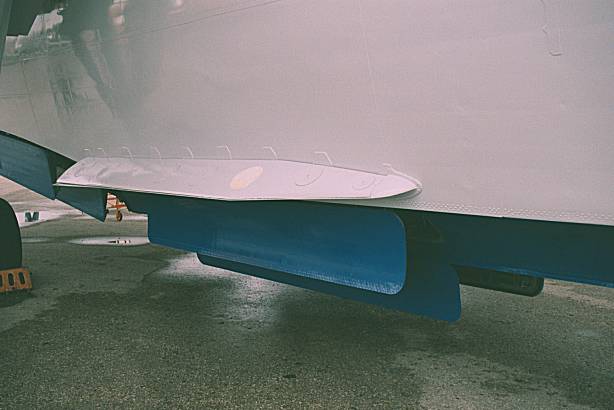
The spray-suppressing chine and doors on the Be-200ChS.
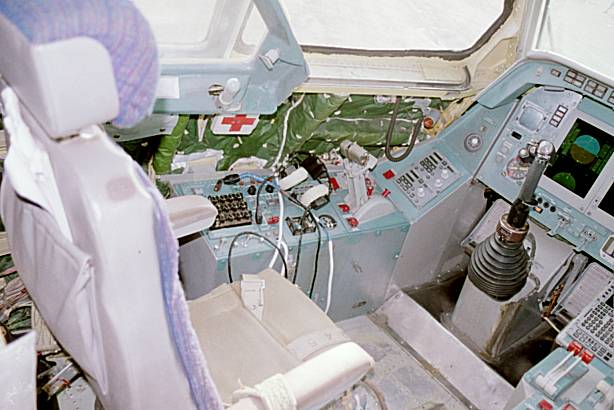
The left hand side of the cockpit on the prototype Be-200.
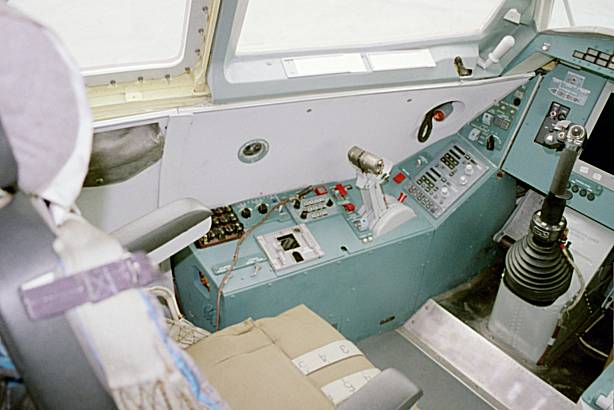
The same position on the Be-200ChS.
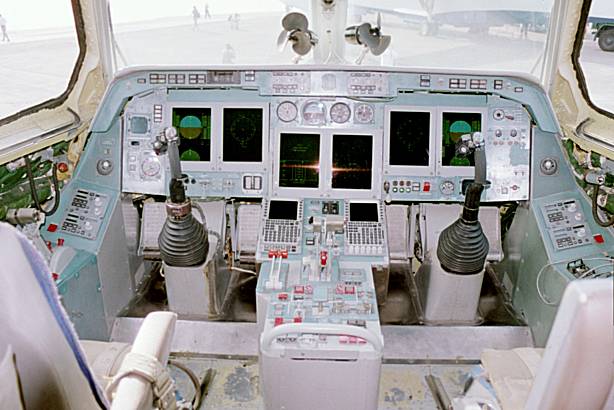
Front panel on the prototype - note the fighter-style control columns
and the six
flat panel MFD's.
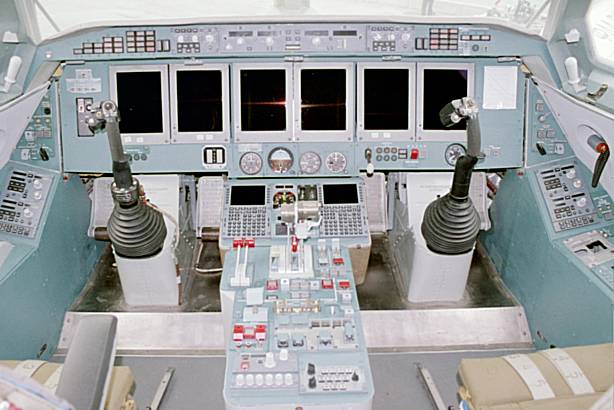
The same area on the Be-200ChS. Note the subtle differences in
layout.
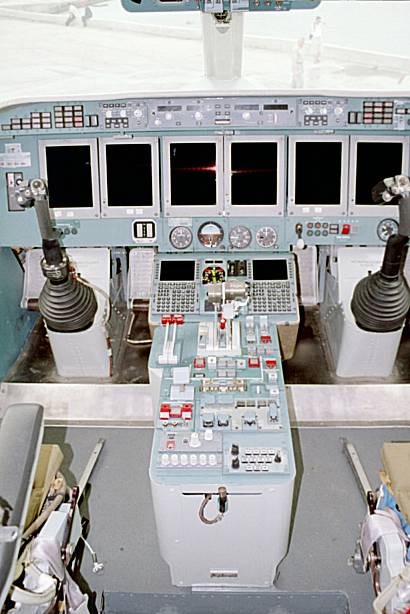
Another view of the centre console.
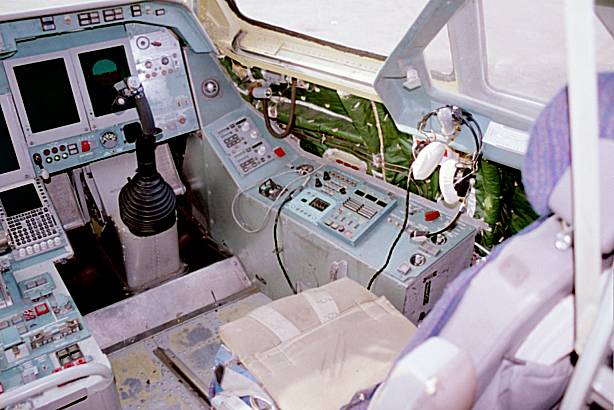
Right-hand side of the prototype cockpit.
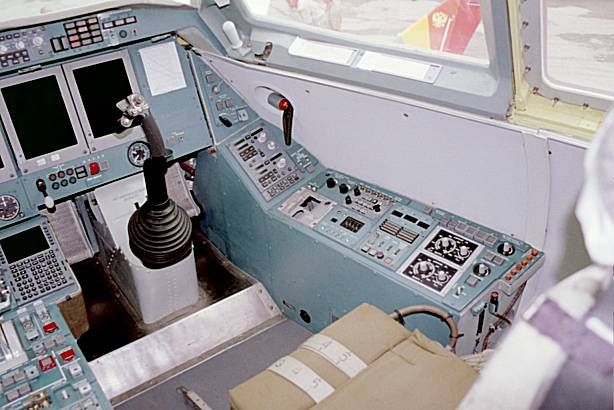
The same area on the Be-200ChS.
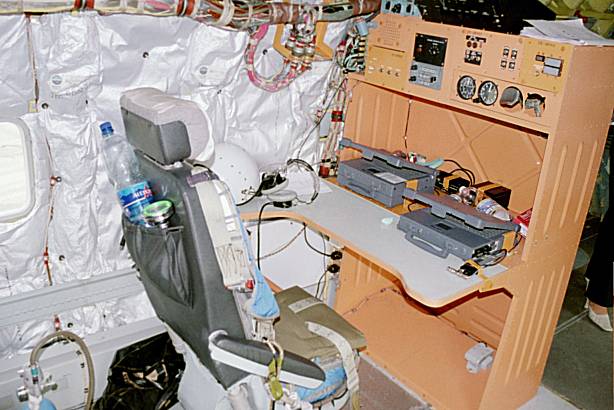
Crew station in the main cabin of the Be-200ChS.
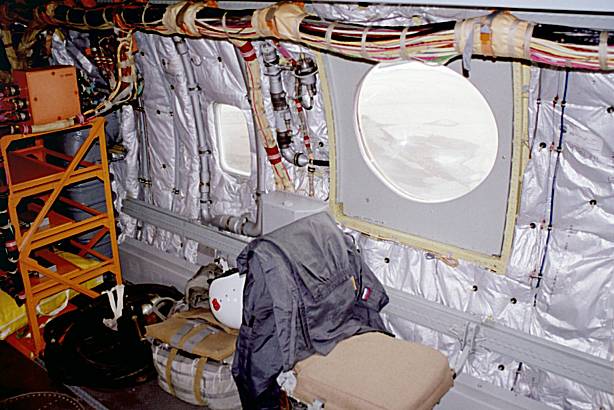
Inside the Be-200ChS - note the observation blister.
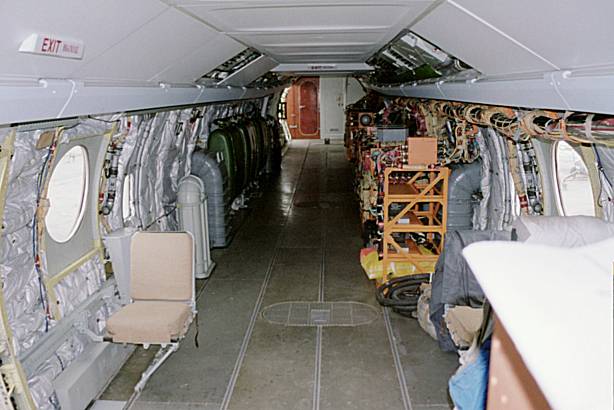
Looking down the relatively uncluttered cabin of the Be-200ChS.
The green tanks hold 1.2 m3 of chemical fluid for mixing with the water.
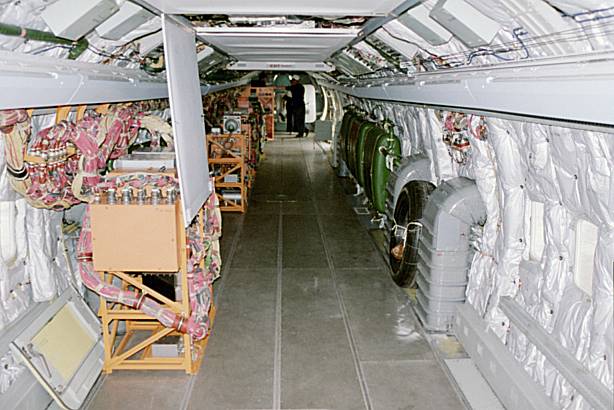
Looking forward from the rear of the cabin.
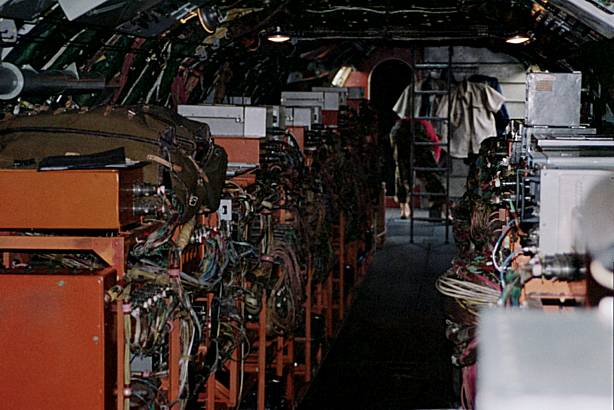
The cabin on the prototype is filled with test equipment racks.
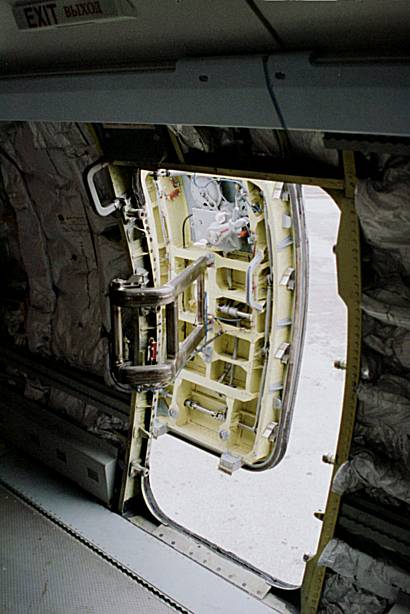
The starboard rear door.
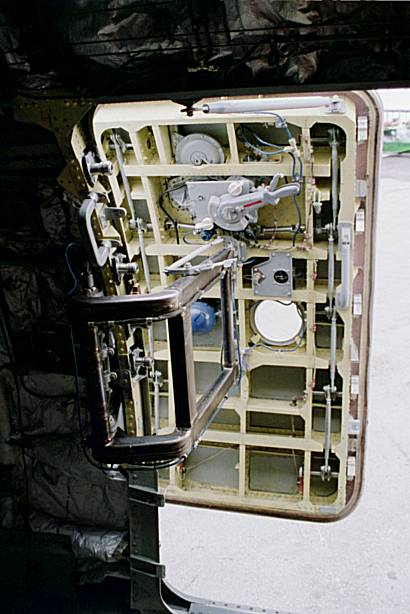
Closeup of the hefty door and opening mechanism.
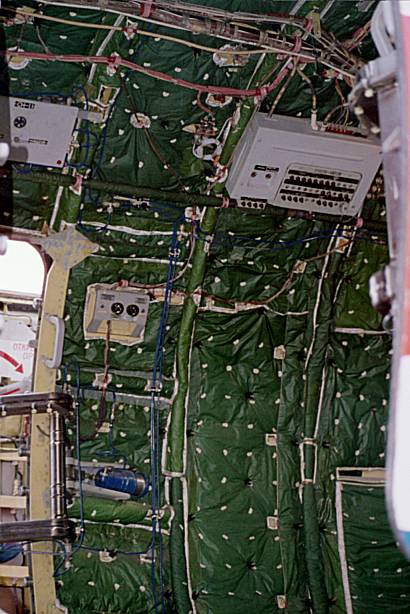
Looking into the rear cabin on the prototype - the open
starboard door is to the right, the port side door is at left.
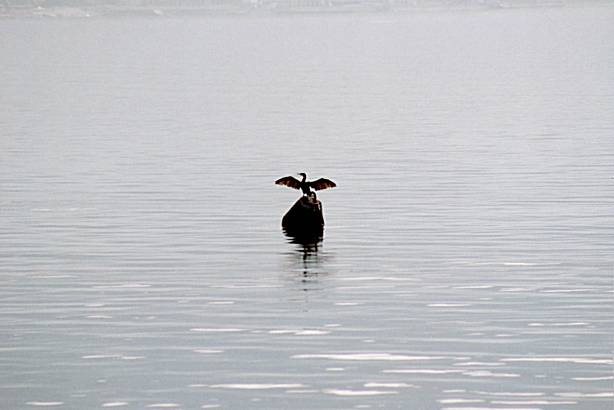
And finally.......a local resident cormorant showing how it should
be done!